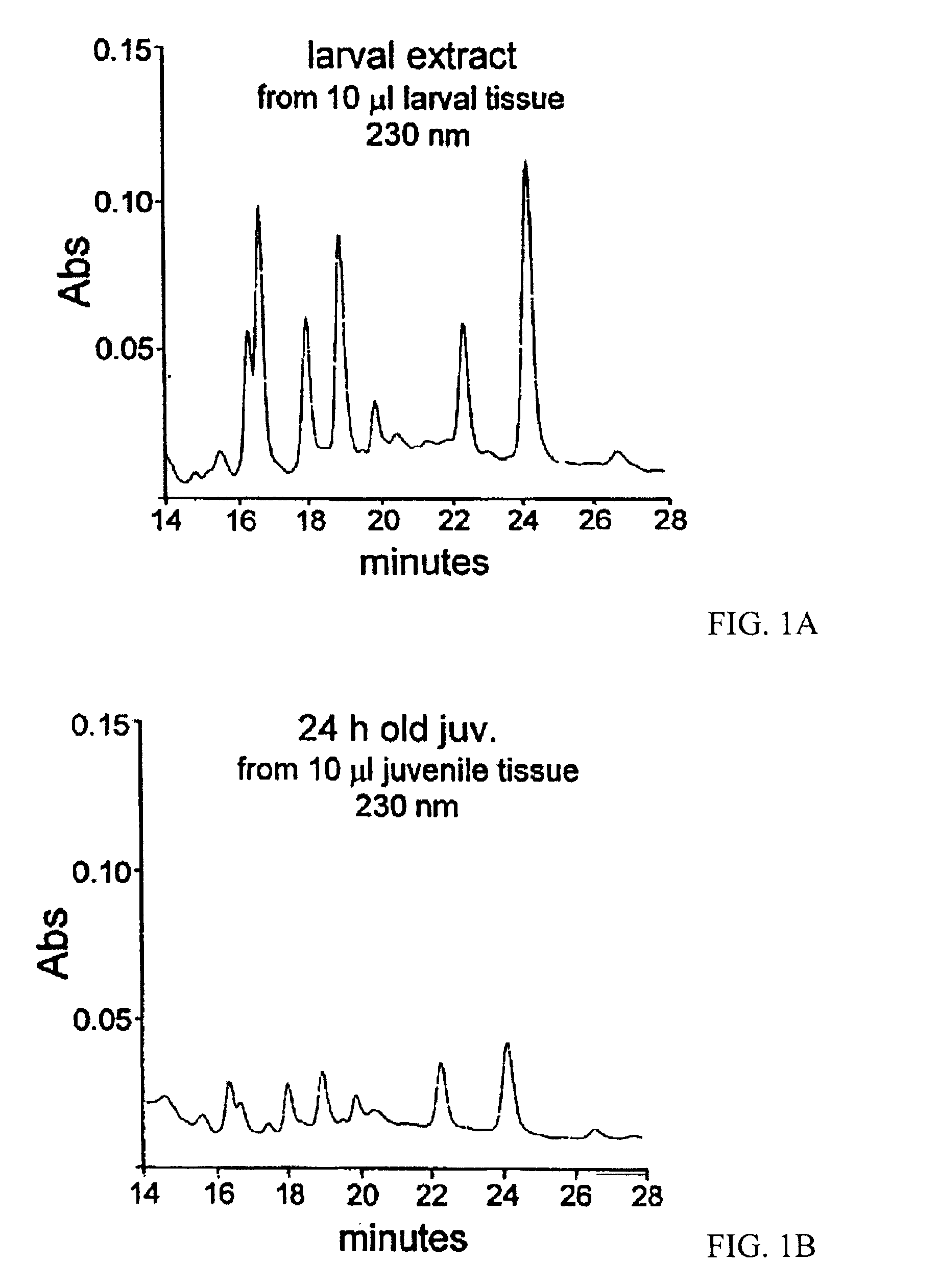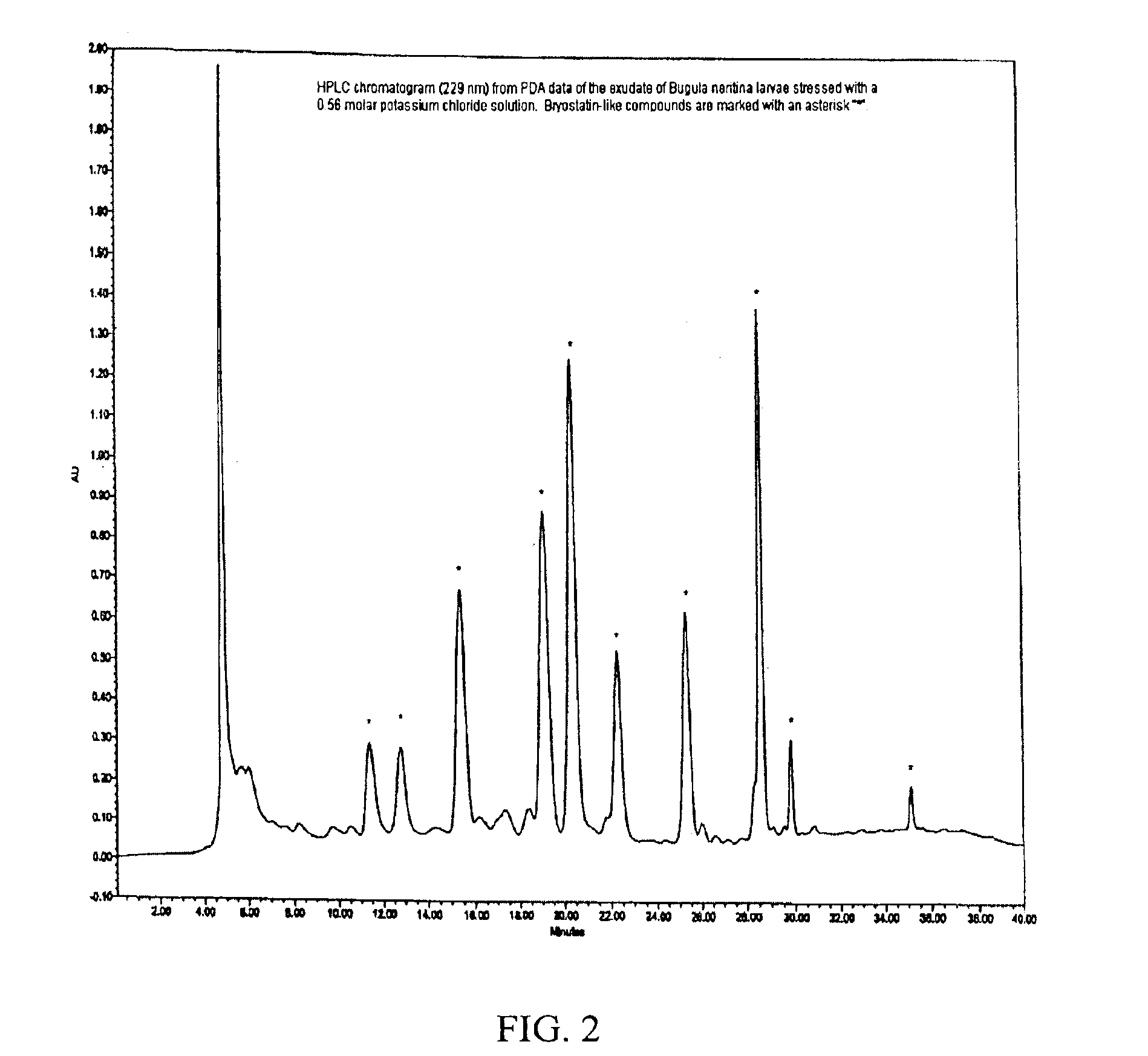Bryostatin composition and bryostatin acquisition methodologies
a technology of bryostatin and composition, which is applied in the field of bryostatin compound and the acquisition of bryostatin, can solve the problems of low reported yield of bryostatin from i>bugula neritina /i>, loss of entire season's crop, and inability to grow and harvest i>bugula neritina /i>, etc., to achieve easy collection and processing, and induce the ex
- Summary
- Abstract
- Description
- Claims
- Application Information
AI Technical Summary
Benefits of technology
Problems solved by technology
Method used
Image
Examples
Embodiment Construction
[0023]The present invention now will be described more fully hereinafter with reference to the accompanying drawings, in which preferred embodiments of the invention are shown. This invention may, however, be embodied in many different forms and should not be construed as limited to the embodiments set forth herein; rather, these embodiments are provided so that this disclosure will be thorough and complete, and will fully convey the scope of the invention to those skilled in the art.
[0024]The present invention relates to methods for obtaining bryostatins from marine bryozoans of the Bugula neritina species complex. More particularly, the present invention relates to methods of collecting Bugula neritina larvae and obtaining bryostatins from the collected larvae. Embodiments of the present invention relate to methods for obtaining bryostatins from marine bryozoans of Bugula neritina species complex without necessitating the destruction or harvesting of adult Bugula neritina, which p...
PUM
 Login to View More
Login to View More Abstract
Description
Claims
Application Information
 Login to View More
Login to View More - R&D
- Intellectual Property
- Life Sciences
- Materials
- Tech Scout
- Unparalleled Data Quality
- Higher Quality Content
- 60% Fewer Hallucinations
Browse by: Latest US Patents, China's latest patents, Technical Efficacy Thesaurus, Application Domain, Technology Topic, Popular Technical Reports.
© 2025 PatSnap. All rights reserved.Legal|Privacy policy|Modern Slavery Act Transparency Statement|Sitemap|About US| Contact US: help@patsnap.com



